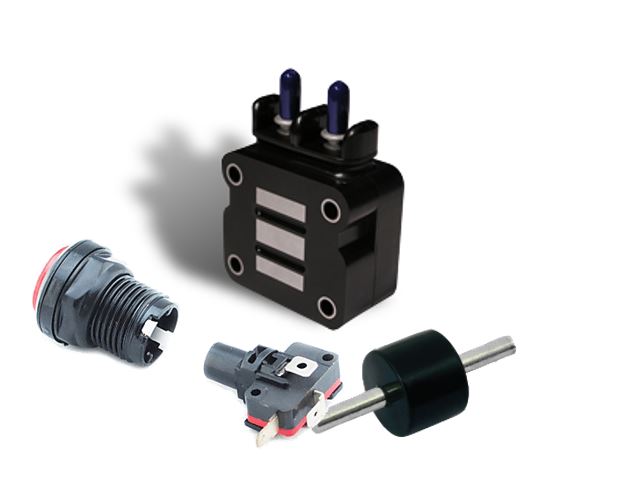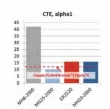MH20-2000 Black Epoxy Mold Compound
- Black epoxy mold compound
- Transfer molding
- Class B (130°C)
Product Description
High temperature resistant epoxy mold compound designed for encapsulation of automotive copper parts tested to AEC-Q200 specification
MH20-2000 is a very tough epoxy mold compound with excellent high temperature resistance. It is designed for automotive applications that require thermoset epoxies instead of thermoplastics to meet higher performance requirements and AEC-Q200 specification.
MH20-2000 is used on devices that have operating temperature above 200°C. It is CTE matched to copper, CuSn6 and bronze.
MH20-2000 works equally well on tin-plated copper applications. Adhesion to these substrates has been tested extensively.
Main Applications
- Thermal Fuses
- Tin-plated Copper parts
- Smaller parts designed to meet automotive requirements
Product Features & Benefits:
- Very tough epoxy mold compound
- High Tg compound designed for higher temperature applications
- Used on devices with an operating temperature up to 200°C
- Designed for excellent adhesion and CTE-matched to copper, CuSn6 and bronze.
Used on underhood automotive and other high temperature applications requiring a high glass transition temperature and great thermal cycle resistance from -55°C to 125°C.
Technical Specifications
| General Properties | |||||||||||
| Color Color The color | Black | ||||||||||
| Filler Content | 80 % | ||||||||||
| Process Method | Transfer Molding | ||||||||||
| Specific Gravity Specific Gravity Specific gravity (SG) is the ratio of the density of a substance to the density of a reference substance; equivalently, it is the ratio of the mass of a substance to the mass of a reference substance for the same given volume. For liquids, the reference substance is almost always water (1), while for gases, it is air (1.18) at room temperature. Specific gravity is unitless. | 1.83 | ||||||||||
| |||||||||||
| Physical Properties | |||||||||||
| Spiral Flow @ 175°C | 86 cm | ||||||||||
| Chemical Properties | |||||||||||
| |||||||||||
| Mechanical Properties | |||||||||||
| |||||||||||
| |||||||||||
| |||||||||||
| Molded Shrinkage | 0.24 % | ||||||||||
| Electrical Properties | |||||||||||
| Volume Resistivity Volume Resistivity Volume resistivity, also called volume resistance, bulk resistance or bulk resistivity is a thickness dependent measurement of the resistivity of a material perpendicular to the plane of the surface. | 4.4x1017 Ohms⋅cm | ||||||||||
| Thermal Properties | |||||||||||
| |||||||||||
| |||||||||||
| Glass Transition Temperature (Tg) Glass Transition Temperature (Tg) The glass transition temperature for organic adhesives is a temperature region where the polymers change from glassy and brittle to soft and rubbery. Increasing the temperature further continues the softening process as the viscosity drops too. Temperatures between the glass transition temperature and below the decomposition point of the adhesive are the best region for bonding. The glass-transition temperature Tg of a material characterizes the range of temperatures over which this glass transition occurs. | 175 °C | ||||||||||
| Thermal Conductivity Thermal Conductivity Thermal conductivity describes the ability of a material to conduct heat. It is required by power packages in order to dissipate heat and maintain stable electrical performance. Thermal conductivity units are [W/(m K)] in the SI system and [Btu/(hr ft °F)] in the Imperial system. | 0.5 W/m.K | ||||||||||
| UL 94 Rating UL 94 Rating Flammability rating classification. It determines how fast a material burns or extinguishes once it is ignited. HB: slow burning on a horizontal specimen; burning rate less than 76 mm/min for thickness less than 3 mm or burning stops before 100 mm V-2: burning stops within 30 seconds on a vertical specimen; drips of flaming particles are allowed. V-1: burning stops within 30 seconds on a vertical specimen; drips of particles allowed as long as they are not inflamed. V-0: burning stops within 10 seconds on a vertical specimen; drips of particles allowed as long as they are not inflamed. 5VB: burning stops within 60 seconds on a vertical specimen; no drips allowed; plaque specimens may develop a hole. 5VA: burning stops within 60 seconds on a vertical specimen; no drips allowed; plaque specimens may not develop a hole | Class B (130°C) | ||||||||||
| Other Properties | |||||||||||
| RoHS Compliant RoHS Compliant RoHS is a product level compliance based on a European Union Directive which restricts the Use of certain Hazardous Substances in Electrical and Electronic Equipment (RoHS). Products compliant with this directive do not exceed the allowable amounts of the following restricted materials: lead, mercury, cadmium, hexavalent chromium, polybrominated biphenyls (PBB) and polybrominated diphenyl ethers (PBDE), with some limited exemptions | Yes | ||||||||||
| Curing Conditions | |||||||||||
| |||||||||||
| |||||||||||
| Transfer Pressure | 40 - 85 kg/cm2 | ||||||||||
| Transfer Time | 6 - 15 s | ||||||||||
Additional Information
Pricing & Availability
Pricing and Volume Price Breaks for MH20-2000 Black Epoxy Mold Compound are available by contacting us. You cannot order this product directly online. CAPLINQ lists all its prices without taxes, shipping payment charges or discounts. CAPLINQ has warehouses and ships from both Canada and the Netherlands, and if your shipping address is one of these two countries, applicable taxes will be applied. If your shipping address is to the United States, we request your company’s Employer Identification Number (EIN) or Tax Identification Number (TIN). This is a unique 9-digit number assigned by the IRS and is required for all cross-border shipments. Failure to provide this number could result in delays to your order. If your shipping address is within the EU, but outside the Netherlands, then we are required to request your company's Value Added Tax (VAT, BTW, MwSt) number to be able to ship the goods tax-free. For all other countries, no taxes are levied on your orders. DON'T LIKE THESE PRICES? Tell us what you will pay for what order quantity, and our customer service team will get back tou you within 24 hours with a reply.. Minimum Order Quantity for MH20-2000 Black Epoxy Mold CompoundThe minimum order quantity for this package size is (s). Shipping Charges for MH20-2000 Black Epoxy Mold CompoundAll prices shown are ex-works CAPLINQ, but during the checkout process, you will be given several shipping options including Canada Post, TNT, UPS or the choice of using your own freight forwarder. Depending on your shipping address, the shipping charges will be calculated as follows:
Payment option for MH20-2000 Black Epoxy Mold CompoundDuring the checkout process, you will be presented with several payment options including:
Availability for MH20-2000 Black Epoxy Mold CompoundTo the right of the product is a small icon that lets you know the availability and leadtime of the product. This leadtime is the time to ship the product and delivery times vary based on the method of delivery you select at the time you place your order. Contact us if anything is unclear or you need more assistance. |
Technical Specifications
Typical applications and uses of MH20-2000 Black Epoxy Mold Compound include:
Technical Datasheets for MH20-2000 Black Epoxy Mold CompoundTDS (English) |
Competitive Crossovers
| |||||||||
Videos & Other Media
Sorry, there are no related videos at this time. |
Additional Information
Product Reviews
Packaging Details
The following information is specifically related to each unit of measure of MH20-2000 Black Epoxy Mold Compound. If you which to compare this to other product sizes, click on the respective product from the list above and check here for values specific to that product. These values are taken from our internal database and are used in the calculation of the gross weight and packaging dimensions of the goods during shipping. You can use these values to to approximate delivery charges using your own carrier. Each unit of MH20-2000 Black Epoxy Mold Compound has the following:
|
View Blogs & Forum
CAPLINQ is different. Unlike other business to business enterprises, we encourage our customers to discuss, critique, and otherwise comment on the products we offer. Get more technical information, read detailed posts, and see what customers have to say about about MH20-2000 Black Epoxy Mold Compound on our Corporate Blog and Forum. |






